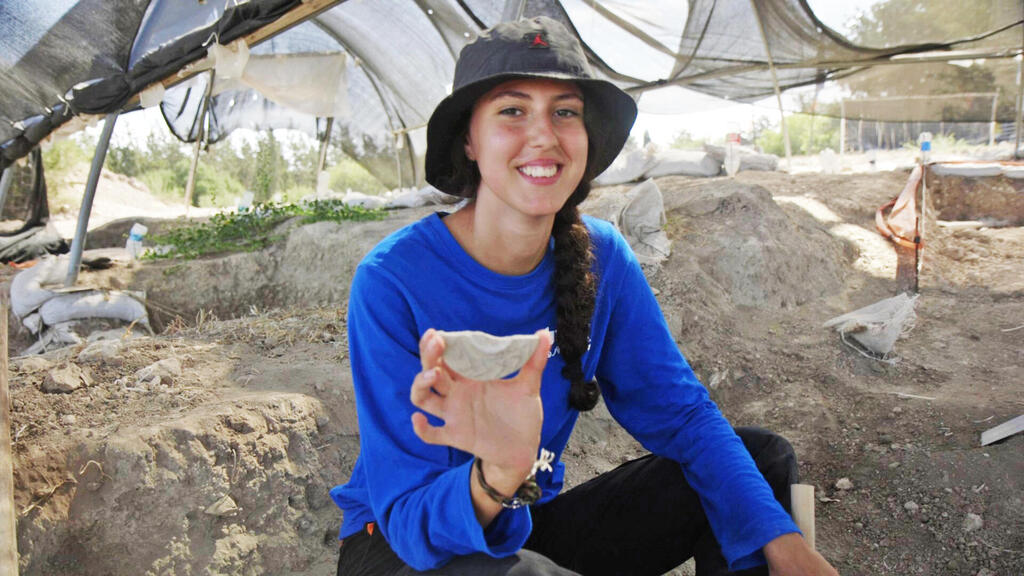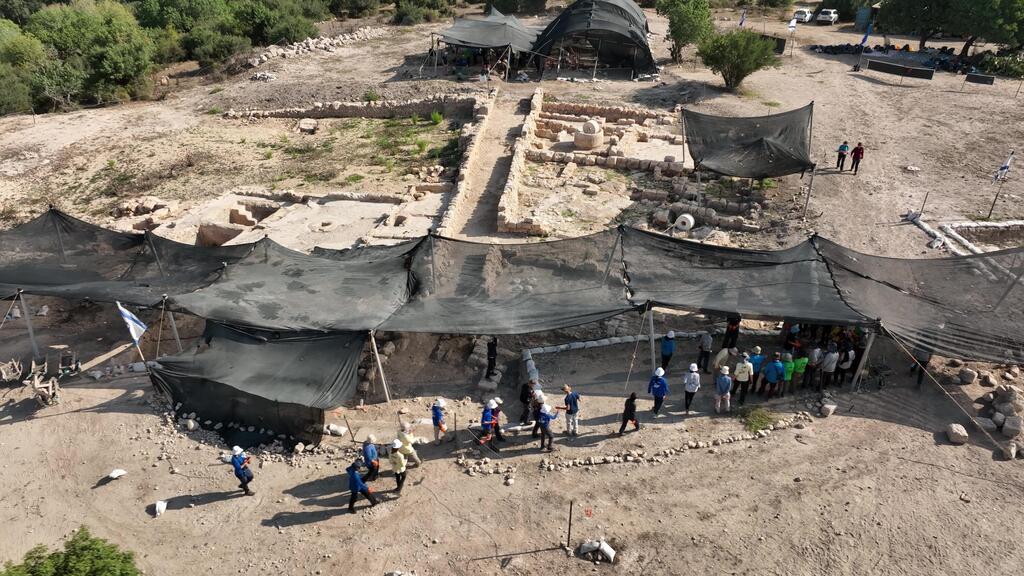A remarkable artifact dating back to the Byzantine period, approximately 1,500 years ago, was discovered during an excavation by the Israel Antiquities Authority (IAA) in the ancient city of Usha, Northern Israel. The significant find, dubbed a "magic mirror," was unearthed by 17-year-old Aviv Weizmann from Kiryat Motzkin.
Read more:
Every year, a youth delegation undertakes a 56-mile survival trek from Mount Meron to Mount Hermon. The journey includes visits to various archaeological sites overseen by the IAA, which are scattered across the country and soon to be open to the public. The young participants also engage in active archaeological excavations at these locations during their visits.
The youth delegation participated in the archaeological work at the ancient Usha site, led by Hana Abu Oksa Aboud from the Antiquities Authority. This week brought exciting news as the dig unearthed a significant artifact. While working on the site amid the remnants of ancient walls, Aviv discovered a fragment of pottery protruding from the ground.
She pulled it out and presented it to Dr. Einat Ambar-Armon, director of the IAA Educational Center. She recognized it as none other than a mirror plate, which was once used for casting spells.
Navit Popovitz, curator of classical periods at the IAA, explained, "This fragment discovered by Aviv is a 'magic mirror' dating back to the Byzantine period, specifically the 4th-6th centuries AD. The plate's recess was designed to hold a mirror, serving as protection against bad luck.
"The belief behind it is that the face of any malevolent entity, such as a demon, gazing at the mirror, would be reflected back toward the entity, thus safeguarding the individual in possession of the mirror. In the past, similar mirrors were also found as offerings in graves, intended to protect the deceased during their journey to the afterlife."
IAA Director Eli Escusido further highlighted, "The excavations conducted by the young explorers have revealed a multitude of other fascinating ancient artifacts, ranging from pottery and coins to fragments of embellished tiles and even an aqueduct. History, typically taught within the confines of classrooms, springs to life from the very ground we excavate. For a student to personally dig and unearth an artifact dating back thousands of years is an unforgettable experience. It serves as an unparalleled means of connecting to our land and heritage."



